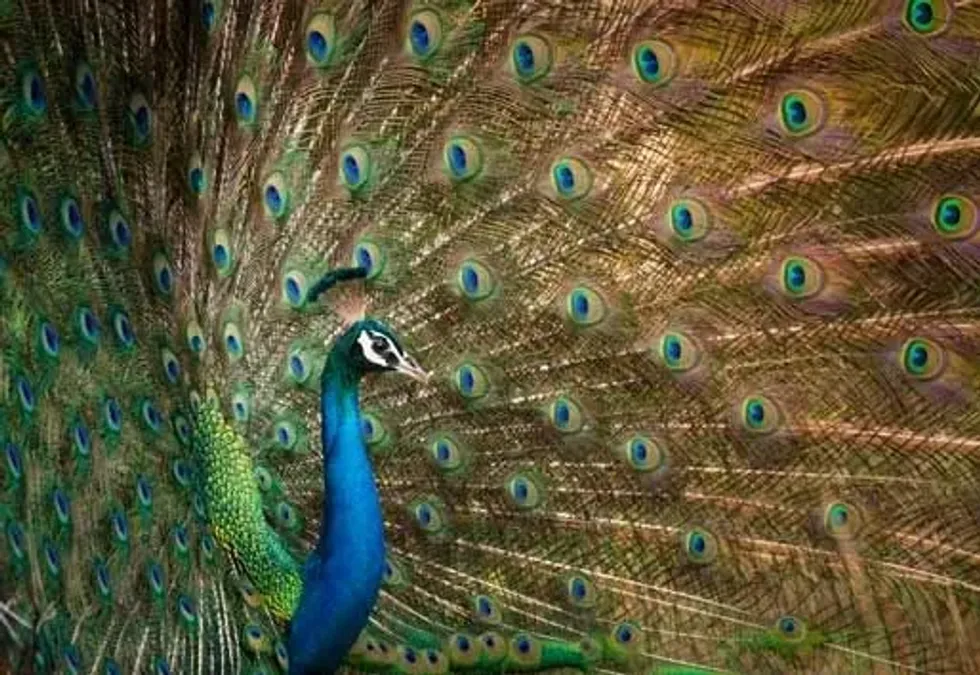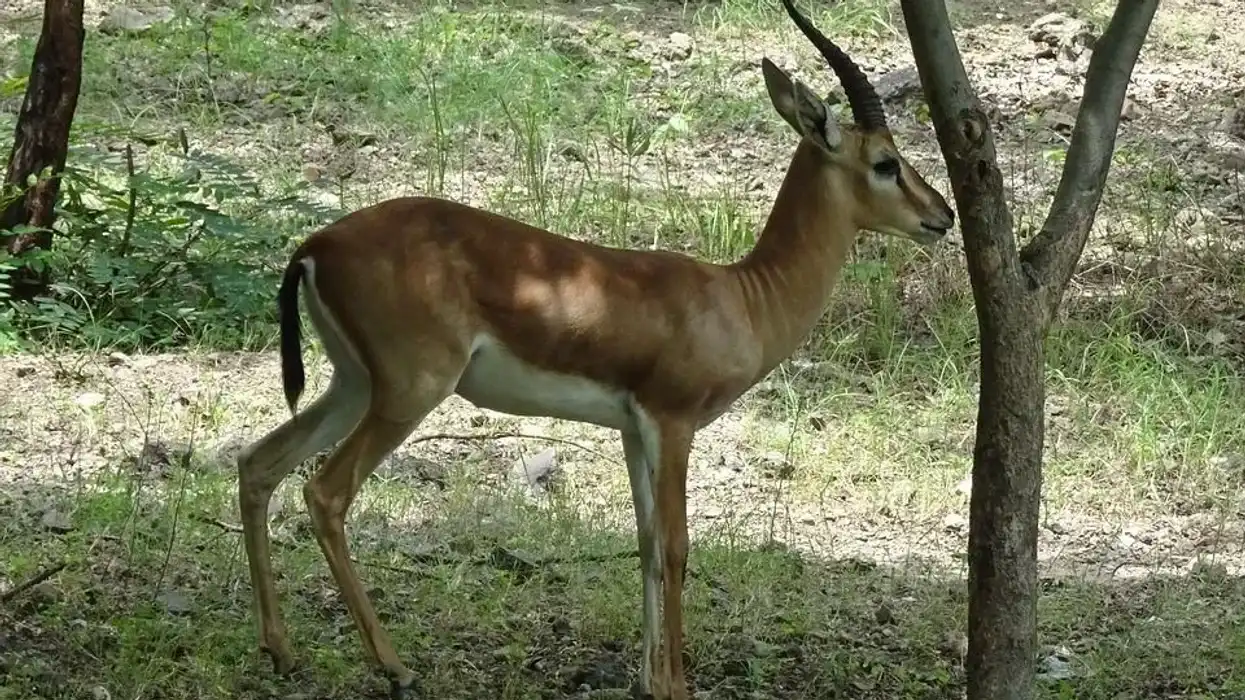The Indian peafowl (Pavo cristatus) is a green-blue Indian peafowl; native to the Indian subcontinent. It is the national bird of India and the peafowl's common name is peacock, for both males and females of the species. The Indian peafowl variations based on feathers include white, green, and purple.
Indian peafowl feet are made for fast running. Classification of Indian peafowl domestic vs the feral peafowl is commonly done on the basis of the Indian peafowl's habitat and eating habits.
Wild peacocks eat insects, reptiles, and mammals. Indian peafowls are wild predators and will eat whatever fits in their beak, even small mammals. The sexual selection of peacock males is made extensively by peahen females during the breeding season.
The bird’s population is decreasing due to hunting and habitat loss. Their large size also attracts a lot of predators as well. Here are some interesting Indian peafowl facts for your perusal. If you like this article, do check out the marbled murrelet and the black necked stilt.
Indian Peafowl Interesting Facts
What type of animal is an Indian peafowl?
An Indian peafowl is a bird. To see a native Indian peafowl flying is a sight to the eyes. These peafowls are quite selective when it comes to choosing their male peacock.
What class of animal does an Indian peafowl belong to?
An Indian blue peafowl belongs to the class Aves.
How many Indian peafowls are there in the world?
The population of Indian peafowls in the world is 100,000. The population of these birds is decreasing every year.
Where does an Indian peafowl live?
Indian peafowl commonly lives in woods and open grasslands in India and Sri Lanka. Males and females of the peafowl species do not have separate habitats.
What is an Indian peafowl's habitat?
An Indian peafowl natural habitat is deciduous forests. These birds inhabit shrublands and green grasslands in groups. Peacocks prefer areas with few green trees for roosting and laying eggs. They don’t let animals near their eggs.
Peafowls can live in cold temperatures. The young peafowl, on the other hand, needs body heat to survive cold temperatures. Females lay their eggs in trees.
Who do Indian peafowls live with?
The Indian peafowl is seen to live in small groups with birds of their own kind, and with humans. The peacock bird can be very friendly to humans once they have established that they are not in danger.
How long does an Indian peafowl live?
The life span of a native Indian peafowl is 20-25 years. The bird ages almost four times faster than humans.
How do they reproduce?
Indian peafowl reproduces during their breeding season to form chicks. The bird reaches sexual maturity at the age of two or three years.
Male peafowl open their tail feathers and put on a display to impress peahens for breeding. A female peafowl is very selective in choosing her breeding mate. Females choose the peacock that has the most striking features.
The peahens look at the number of eyespots a peacock has on its tail feathers during the display. The more eyespots on the feathers, the more likely the female to be attracted to the male.
The number of eyespots on the peafowl's feathers determines the health of the peacock and the chicks. Female peafowls, after choosing a mate, get very possessive and do not let other peahens come near the mate. This is the idea that her chicks should be the best.
They conduct mating until their eggs are laid, which takes around 28 days. The Indian peafowl's average clutch size is between four and eight eggs.
What is their conservation status?
The Indian peafowl is listed as of Least Concern as per IUCN.
Indian Peafowl Fun Facts
What do Indian peafowls look like?

The Indian peafowl is brightly colored blue-green. The males of the species have a blue fan-like crest and a long tail with elongated upper tail coverts.
The tail feathers are multicolored and are arranged in beautiful patterns. The females of the species do not have a tail. They have brown color near their breasts and a white face.
The females do not have the bright colors of the males, hence have a dull appearance as compared to males. Peahens also lack long upper tail coverts and are generally of brown color in appearance with light-colored underparts.
How cute are they?
The Indian peafowl is very cute. The tail of a male Indian peafowl is magnificent and has no match to its beauty. No animals or birds are as colorful as Indian peafowls.
How do they communicate?
Indian peafowls have very loud vocals. They communicate with calls understood on their own. They are known to make distinguished calls when in mating season, in danger, and in the rain. Peahens sometimes groom their feathers in distinct patterns to visually communicate with other peahens.
How big is an Indian peafowl?
The males of the Indian peafowl species are 39.3- 47.2 in long, including the tail. The females are smaller than males and are 37.4 in size. Both of them have a height of around 24-36 in. They are 10 times bigger than a crow.
How fast can an Indian peafowl run?
An Indian peafowl can run at a speed of 9.94 miles per hour
How much does an Indian peafowl weigh?
A male Indian peafowl (peacock) weighs 8.8-13.2 lb and a female Indian peafowl (peahen) weighs 6.1-8.8 lb.
What are their male and female names of the species?
The male name of the Indian peafowl species is a peacock and the female name of the Indian peafowl species is a peahen.
What would you call a baby Indian peafowl?
A young, baby Indian peafowl is called a peachick or simply a chick.
What do they eat?
An Indian peafowl commonly eats small snakes, chameleons, lizards, insects, mammals, and reptiles. Their diet also includes crops and seeds. They are good wild predators.
Are they aggressive?
Generally, Indian peafowls are very silent creatures, but when provoked, they can get very aggressive.
Would they make a good pet?
Many Indians are known to have Indian peafowls as pets. These birds cannot stay indoors due to their enormous size; hence they are seen in backyards, front yards, and on the rooftops of people's houses.
Did you know...
Indian peafowl has its breeding season from April to September.
Their feathers are used as decorative feathers in Indian homes.
Indian peafowl taxonomy was first done by Carl Linnaeus.
Indian peafowl's spiritual meaning is to embrace freedom, integrity, love, and self-expression.
The three wide varieties of Indian peafowl are blue, white-feathered, and black-winged.
Peacocks compete with other peacocks by dancing.
Which part of its body does the Indian peafowl use to survive?
Indian peafowls have spurs on the back of their legs. These spurs are sharp and can be used as defense mechanisms when attacked. Peacocks use their tail to attack, which helps in their survival. Peahens, on the other hand, use their body as camouflage to hide when in danger.
What are Indian peafowls closely related to?
The Indian peafowl belongs to the pheasant family and the partridge family.
Here at Kidadl, we have carefully created lots of interesting family-friendly animal facts for everyone to discover! Learn more about some other birds including the peahen and the least tern.
You can even occupy yourself at home by drawing one of our Indian peafowl coloring pages.










